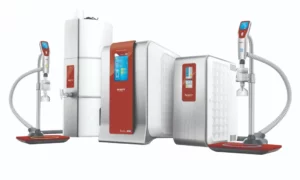The field of dentistry has seen many advances in recent years, thanks in large part to advances in imaging technologies. These technologies allow dental professionals to get a more detailed and accurate picture of a patient’s teeth and mouth, which can help them better diagnose and treat problems. This article will address the most recent advances in imaging technologies in dentistry.
Let’s take a look at them.
Advances in Imaging Technologies
Here are the most recent advances that took place in dental imaging technologies:
1. 3D printing technology
The 3D printing technology is now used to create dental models and implants. This technology can create highly accurate models of teeth and jaw structures, which can be used for planning dental procedures and implant placement. The models can also be used to create custom-fit dental prosthetics, such as crowns, bridges, and dentures.
2. Digital x-rays
Digital x-rays are becoming increasingly popular in dentistry. They offer several benefits over traditional x-rays, including lower radiation exposure, higher image quality, and the ability to manipulate and enhance images for better diagnosis. They are much more effective and efficient than traditional x-rays and offer patients a much more comfortable experience.
3. Dental lasers
Lasers are becoming increasingly popular in dentistry. They offer many benefits, including removing tooth decay, treating gum disease, and even whitening teeth. Lasers are much more precise than traditional tools and can often be used with less anesthesia, which is good news for patients looking to avoid invasive dental procedures.
4. Cone beam computed tomography (CBCT)
CBCT is a type of 3D imaging that uses special x-ray equipment to take detailed pictures of the teeth, jaws, and surrounding structures. This technology can be particularly helpful in planning treatment for dental implants or other complex procedures. This is because CBCT can provide a more detailed view of the teeth and bones than traditional x-rays.
5. Intraoral cameras
Intraoral cameras are small, handheld cameras that can be used to take close-up pictures of the teeth and gums. This technology can help dental professionals diagnose problems when they are often more easily treated. This technological advancement has enabled patients to receive the dental care they need sooner and has helped improve oral health.
6. Panoramic radiograph
The newly available panoramic radiograph provides diagnostic information similar to periapical radiographs but with decreased radiation dosage and increased field of view. The panoramic radiograph is a two-dimensional projection image that shows the entire mandibular arch, maxillary teeth, and surrounding structures. This radiograph can be used to detect calcifications, fractures, tumors, and other abnormalities.
7. Cephalogram aging
The cephalometric projection is a radiographic examination that provides detailed information about the relationships of the hard and soft tissues of the head. Cephalometric analysis is used to assess treatment needs, evaluate treatment results, and communicate findings to other dental professionals. The cephalometric projection has been in use for over 70 years, and it remains an essential tool in orthodontic diagnosis and treatment planning.
The Bottom Line
Dentistry is a field that is constantly evolving. In the last few years, there have been significant advances in imaging technologies. These new technologies have allowed dentists to get a more accurate picture of a patient’s mouth, teeth, and gums. This has resulted in better diagnosis and treatment of dental problems.
There are two main types of imaging technology that are used in dentistry: X-rays and computed tomography (CT) scans. Therefore, if you’re looking for a new dentist, be sure to ask about the type of imaging technology that they use. It will help you get the best possible care for your teeth.


































